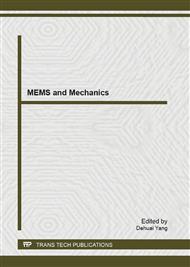[1]
B.V. Venkatarama Reddy, K.S. Jagadish, "Embodied energy of common and alternative building materials and technologies", Energy and buildings, 35:129-137, 2003.
DOI: 10.1016/s0378-7788(01)00141-4
Google Scholar
[2]
P. Duxson, J.L. Provis, G.C. Lukey, J.S.J. van Deventer, "The role of inorganic polymer technology in the development of 'green concrete'", Cement and Concrete Research, 37(12):1590–1597, (2007)
DOI: 10.1016/j.cemconres.2007.08.018
Google Scholar
[3]
G. Minke, "Building with earth", 2nded, Birkhäuser, Basel, Switzerland, 2006.
Google Scholar
[4]
H. Houben, H. Guillaud, "Traité de construction en terre", 3rded, Parenthèses, Marseille, France, 2006.
Google Scholar
[5]
T. Morton, "Earth masonry : Design and construction guidelines", 1st ed, BRE Press, Bracnell, UK, 2008.
Google Scholar
[6]
T. Morton, F. Stevenson, B. Taylor, N, Charlton Smith, "Low cost earth brick construction", Arc Architects, 2005. ISBN 0-9550580-0-7.
Google Scholar
[7]
M. Lawrence, A.C. Heath, P. Walker, "Development of a Novel Binder for Mortar for Unfired Clay Bricks", Proceeding of second international conference on sustainable construction materials and technologies, Ancona, Italy, 2010 June 28-30.
Google Scholar
[8]
E. Prud'Homme, P. Michaud, E. Joussein, C. Peyratout, A.Smith, N. Sauvat et al, "Geomaterial foam to reinforce wood", Proceeding of the 34th International Conference on Advanced Ceramics and Composites; Daytona beach, USA, 2010 January 24-29.
DOI: 10.1002/9780470944103.ch1
Google Scholar
[9]
F. Gouny, F. Fouchal, P. Maillard, S. Rossignol, A "geopolymer mortar for wood and earth structure", in press in Journal of construction and building materials, 2012.
DOI: 10.1016/j.conbuildmat.2012.04.009
Google Scholar
[10]
E, Prud'homme, P. Michaud, E. Joussein, C, Peyratout, A, Smith, S. Arrii-Clacens, J.M. Clacens, S. Rossignol, "Silica fume as porogent agent in geo-materials at low temperature", Journal of the European Ceramic Society, 30:1641–1648, 2010.
DOI: 10.1016/j.jeurceramsoc.2010.01.014
Google Scholar
[11]
CEN, "European norm for methods of test for masonry – Part 1: Determination of compressive strength", NF EN 772-1, 2001.
Google Scholar
[12]
Y. Benoit, "Le guide des essence du bois", 2nded, Eyrolles, Paris, France, 2008.
Google Scholar
[13]
CEN, "European norm for methods of test for masonry – Part 3: Determination of initial shear strength", NF EN 1052-3, 2002.
Google Scholar
[14]
B. Pan, K. Qian, H. Xie, A. Asundi, "Two-dimensional digital image correlation for in-plane displacement and strain measurement: a review", Measurement science and technology 2009.
DOI: 10.1088/0957-0233/20/6/062001
Google Scholar


